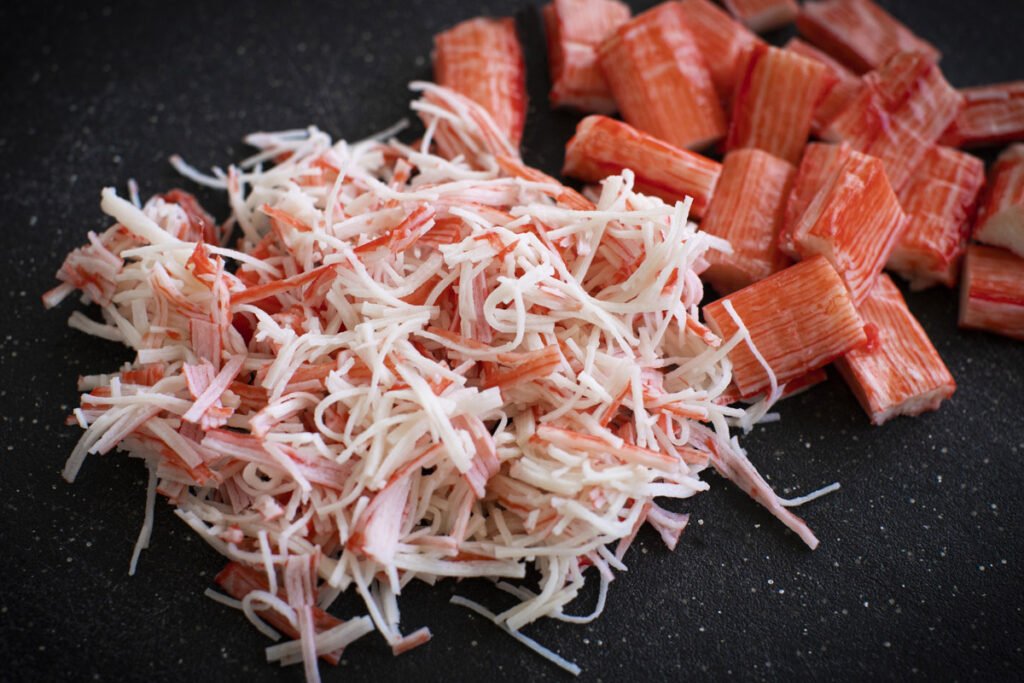The world of seafood is vast and varied, offering flavours and textures to suit every palate. But among the plethora of choices, one particular product stands out for its unique place in culinary culture and marketing lore: kanikama, better known in many parts of the world as Krab sticks or imitation crab. This exciting food item has crossed oceans and cultural boundaries, spinning a fascinating tale of invention, adjustment, and contention.
Table of Contents
Kanikama’s Background
The Japanese origin story of kanikama began in 1975 when it was first produced by Osaki Suisan Co., Ltd. The production of kanikama was an innovative achievement in the seafood industry that offered a cheap alternative to crab meat by using processed white fish to mimic its taste and texture. Two years later, however, The Berelson Company from San Francisco partnered with Sugiyo to introduce kanikama into international markets, which sparked a global curiosity that exists up to date.
Conversely, due to a lack of actual crab meat, the terms “Crab Sticks” were legally restricted in several markets; hence, alternative titles such as Krab Sticks, Ocean Sticks, Sea Legs and Imitation Crab Sticks were adopted. Despite this naming convention, given its versatility and inexpensiveness, Kanikama is still preferred globally.
Cultural Influence and International Adaptation
Kanikama quickly found its footing within Japanese cuisine due to its ability to go well with any dish, from sushi rolls to salads. At the same time, though, it mirrors a global fusion story. Chefs worldwide have infused traditional recipes with kanikama, while others have even created new ones, leading to a blend of authentic and adapted cuisine.
Making up Krab Sticks
It is astonishing how kanikama is made using food technology during the production process. The process starts by selecting fish like pollock or hake, typically ground into a paste termed surimi. To imitate the taste of crab meat, this paste is then flavoured, coloured, and shaped, after which it undergoes precise cooking and packaging procedures to ensure its quality and safety. Consequently, a product that contains the essence of crab comes out minus a steep price tag or troublesome preparations.
Dietary Value and Health Concerns
Kanikama has nutritional benefits, including being low in fats and having high-quality proteins, contrary to what many people think. However, consumers must check added ingredients such as sugars and sodium, which may differ noticeably from one brand to another. This means that although kanikama cannot replace actual crab in terms of nutrition, it is still an ideal choice for individuals who want seafood flavours without much struggle.
Market Patterns and Consumer Desires
Global demand for kanikama has been affected by economic fluctuations, changing dietary trends, and the growing popularity of sushi outside Japan. Today’s innovative restaurants and social media platforms are witnessing trending dishes made with kanikama, thus indicating that consumers’ tastes are evolving despite their inability to resist this versatile ingredient.
Ecological vs. Ethics Disputes
The sustainability of fish sources for kanikama production has come under scrutiny, prompting discussions about the environmental impact of seafood manufacturing. Ethical concerns about marketing kanikama as an alternative crab leave room for questions regarding consumer transparency, especially regarding promotion strategies used within the industry. Consequently, these arguments call for responsible practices in the seafood trade to equate economic gains with conservation efforts toward ecological compensations and consumer entitlements.
Conclusion
Kanikama started in Japan, and it spread all over the world before making its mark on the culinary industry. Its history is themed around invention or creation, cultural touch, food marketing, and regulation mazes. Regardless of the form Kanikama changes, it still stands out as a perfect example of how past meets present: originality meets reformation. Whether one prefers to have it in a basic salad or integrate it into an elaborate sushi roll, Kanikama is always there to allow us to explore the extensive range of flavours that make up our global cuisine.


